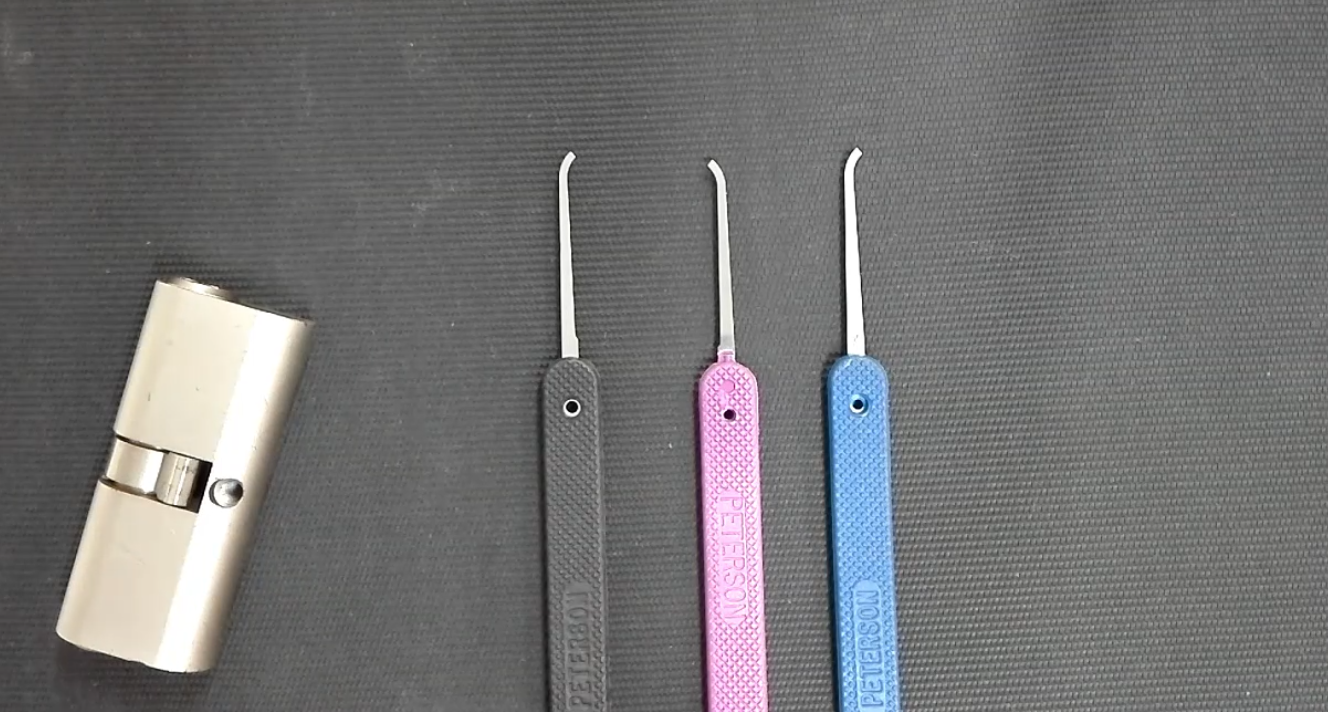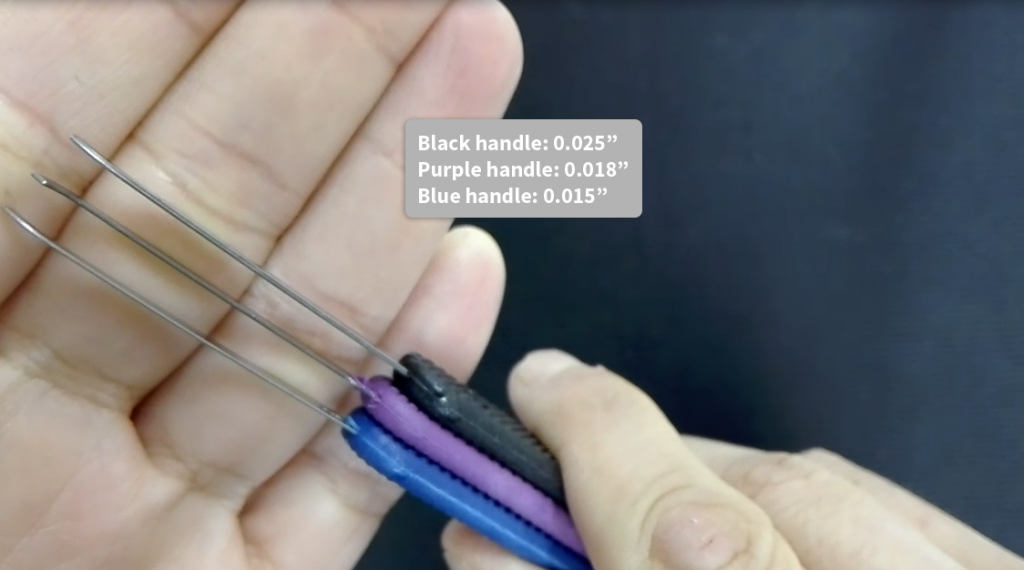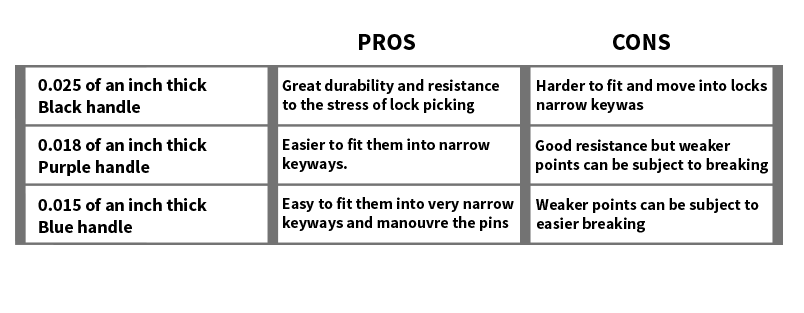Thin Or Thick: Why Choose Slender or Standard Peterson Picks
Your customer is locked out, you approach the lock but you can’t fit your pick into the keyway or you find really hard to manoeuvre the pins inside the lock. Good chances are you are attacking a lock with a narrow “paracentric” keyway.
To solve this issue, most manufacturers have come up with picks which are thinner than your standard tools. This gives you more options when choosing your picks but, on the other hand, can make it harder to choose the set that is right for you and the locks you normally find in your job.
Three thicknesses to pick them all
As you can see in the picture below, Peterson picks come in three different thicknesses.
Different thicknesses mean a different degree of flexibility and stress resistance and, as you can already guess, different pros and cons.
To find out more about the benefits of each width, watch our short explainer video here:
To sum up
Which Peterson picks should I get?
If you work on locks with a standard keyway, you should get the “standard” 0.025” picks that will be very useful in most locks. They will also generally last longer than a thinner pick.
If you are finding a lot of locks with narrow keyways in your area you should definitely add a selection of slimmer picks to your sets. Although thinner than a 0.025” pick, they are made of Peterson Government Steel too. That guarantees excellent resistance and durability so that you won’t need to change them every month.
If you are heavy-handed on the lock, then the new line of 0.018” slender picks is a good compromise that should perfectly suit your style of picking. They are thin and will give you enough room to work on the pins while offering a greater level of resistance to stress and tension of lock picking than the slimmer 0.015” picks.
In addition to being thinner, Peterson Euro Profile Slenders are also designed with a “Euro” shank, which simply means a reduction in shank height. This shank reduction makes it much easier to access tighter keyways and get more leverage within the lock.




